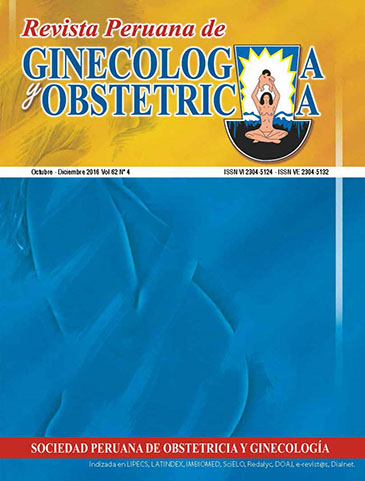Ten years of high complexity assisted reproduction techniques in the Peruvian Andes
DOI:
https://doi.org/10.31403/rpgo.v62i1935Abstract
Introduction: Infertility is currently a more frequent diagnosis, at sea level and at high altitudes, and development of high complexity assisted reproduction techniques in the Andes of Peru is essential. Objective: To define the results of the application of these techniques in an institution at 3 330 meters above sea level. Design: Descriptive and retrospective study. Setting: Centro de Fertilidad y Ginecología del Sur, Cusco, Peru. Patients: 576 patients with infertility attended between years 2005-2015. Methods: Records of the procedures performed were reviewed and rates of clinical pregnancy according to age and days of culture were established for both autologous oocytes and ovodonation. Statistical significance of differences found was analyzed by Fisher exact test. Main outcome measure: Rate of clinical pregnancy. Results: Rates of clinical pregnancy were: 30.4% in autologous oocytes, 42.4% in ovodonation, and 25% in in vitro maturation oocytes. Frequency of twin pregnancy was 31.6%, and of triple pregnancy, 7.9%. conclusions: Rates of clinical pregnancy were similar to those observed internationally. This emphasizes the need of strategies to diminish the plurality of pregnancies, as well as to improve the rate of pregnancy in women ≥ 37 years old.Downloads
Download data is not yet available.
Downloads
Published
2017-01-05
How to Cite
Vargas Tominaga, L. A., Pella, R., Bartolo, L., Alarcón, F., Vargas, A., Vargas, A., Bernal, G., Gallegos, M., Escobedo, D., Gómez, M., & Huaynapata, H. (2017). Ten years of high complexity assisted reproduction techniques in the Peruvian Andes. The Peruvian Journal of Gynecology and Obstetrics, 62(4), 355–361. https://doi.org/10.31403/rpgo.v62i1935
Issue
Section
Artículos Originales
















